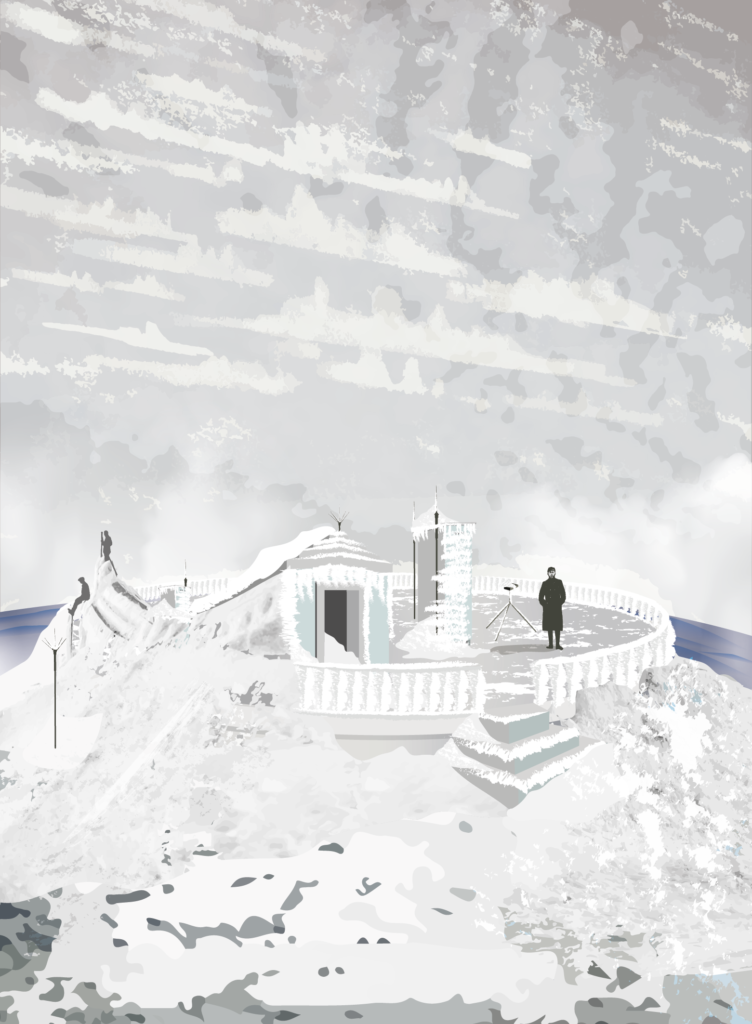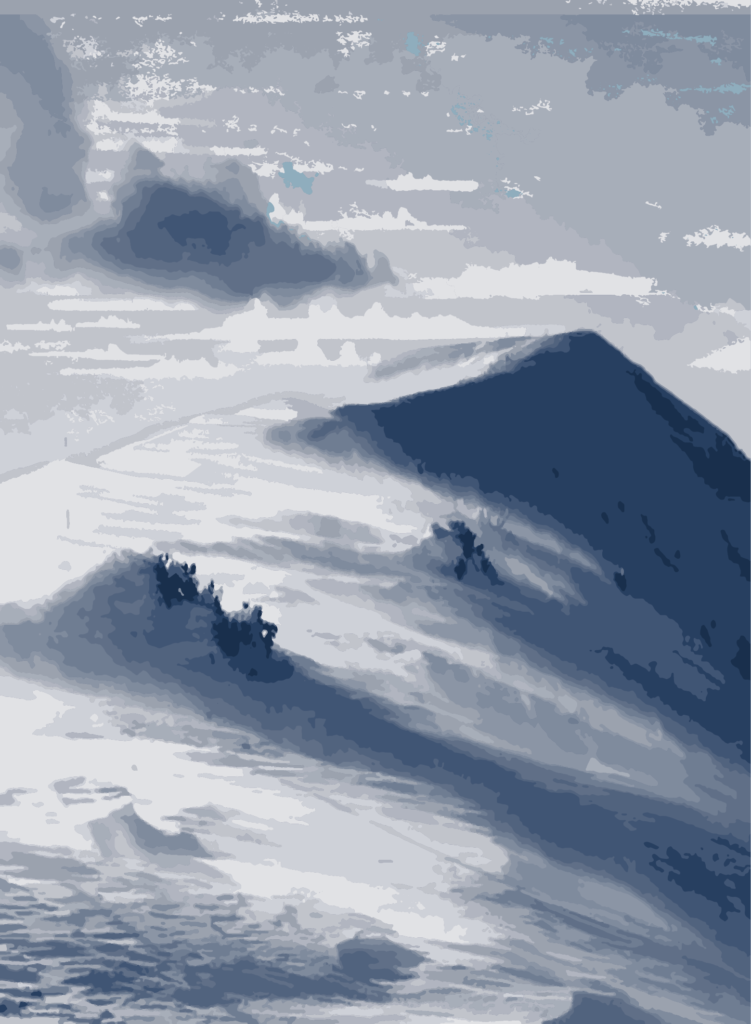A world of extremes
In 1873, France’s young National Weather Service built a series of observatories on the country’s mountaintops. Like the Mont Aigoual, the Pic du Midi and the Puy de Dôme, the Mont Ventoux was outfitted with equipment designed to record data at high altitudes, far from the local influences of the plain. Installed at the mountain’s highest, most exposed point, behind the observatory, the rotunda served as a prime observation platform. Instruments were installed there to measure temperature, humidity, atmospheric pressure, wind speed and direction, and rain, hail and snow precipitation. These instruments were often very costly, and were carefully selected for their resistance to extreme weather conditions. Despite the precautions taken, many of them were damaged by the weight of the ice or the powerful gusts of the mistral wind.
The meteorologists tasked with taking the readings had to be resourceful to cope with the harsh weather. To protect access to the rotunda, a tunnel was built to connect it to the observatory. The two opposing doors installed at the end make it possible to access the platform without a headwind, regardless of the wind direction.

A year at the summit of the Mont Ventoux
A year at the summit of the Mont Ventoux
6°C Average maximum temperature in January
-16°C Average minimum temperature in January
21°C Average maximum temperature in July
1°C Average minimum temperature in July
129 days with winds over 100 km/h in 2017
284 days of frost

Records!
204 days of fog140 days of snow-covered ground
-26°C minimum temperature (winter 1956)
28.4°C maximum temperature (summer 2017)
320 km/h wind speed recorded in 1967